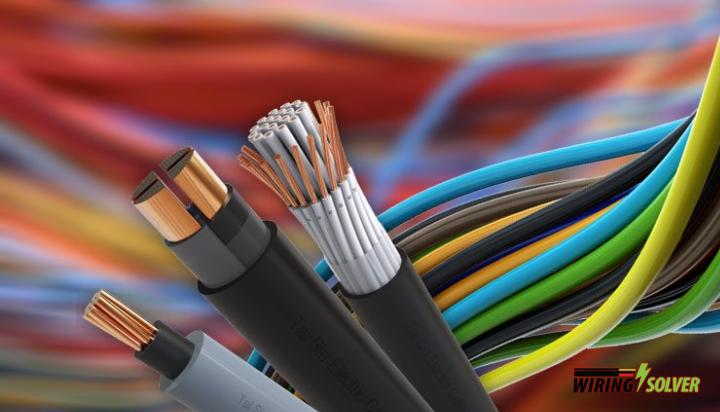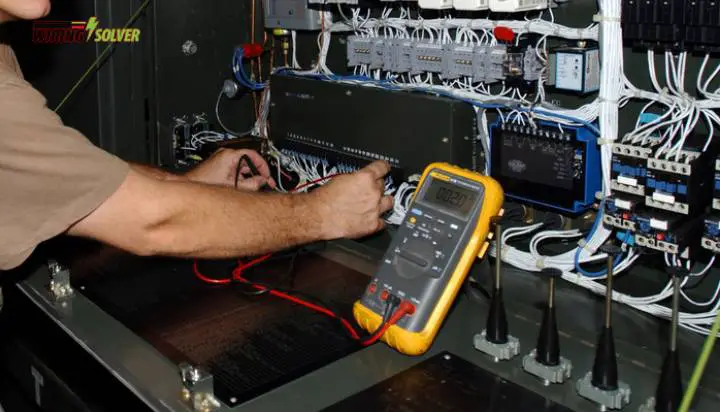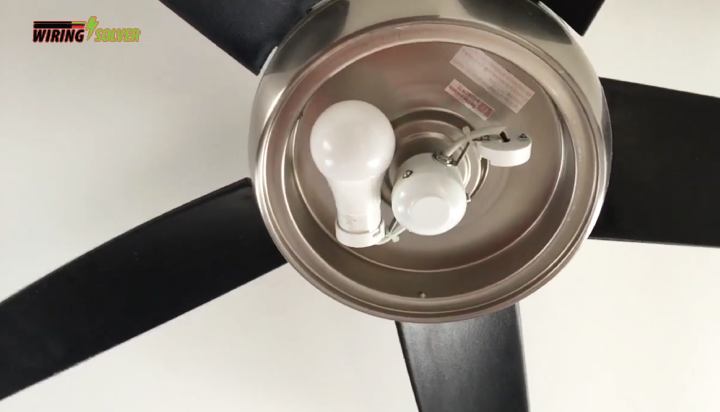Key Points
- Ceiling fan direction can have a huge impact on your cooling during summer including your electricity bill.
- Ceiling fan direction can easily be changed using a directional switch located on the housing.
- A proper directional airflow, will ensure better cooling alongside putting less strain on your air-conditioning unit.
Ceiling fans are a life saver alongside air conditioners, especially in the summer when the heat is scorching. But did you know, the ceiling fan direction for summer plays a huge role in your cooling system? It can immensely help reduce your electricity bill if utilized properly.
You might now be asking, what way should the fan spin in the summer?
Ceiling fans should rotate counterclockwise in the summer to push cool air down to the floor. Perspiration evaporates in the cool air, creating a wind chill effect that makes you feel cooler without changing the ambient temperature. This allows you to increase the temperature on the thermostat without sacrificing comfort which helps reduce electricity bills.
In this article, I will discuss why it is strictly advised for ceiling fans to rotate counterclockwise in summer, how you can change the direction of your fan and other useful information that’ll help you beat the heat as well as save some money on electricity bills.
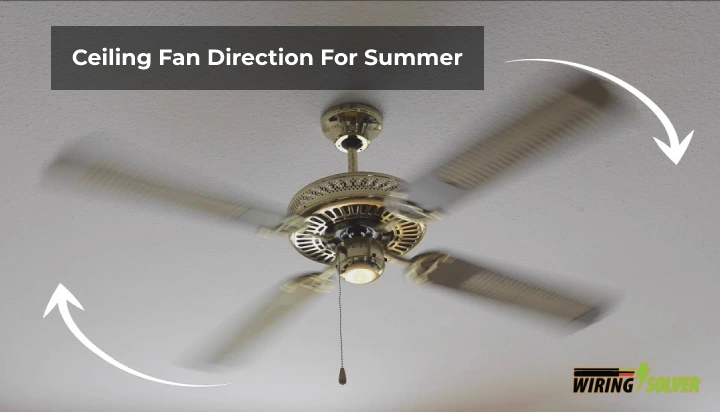
What Direction Should a Ceiling Fan Turn in the Summer?
The ceiling fans should spin counterclockwise during summer, because this creates a downward airflow, which in return cools down the room.
The cold air drains sweat, creating a wind-chill effect that makes you feel up to 8 degrees cooler without affecting the temperature of the room.
This allows you to reduce the need of air conditioning without sacrificing comfort, potentially saving up to 40% on cooling expenditures. Ceiling fan direction with air conditioning should also follow the same rule.
Furthermore, having an outdoor fan on your patio or porch will allow you to spend more time outside in comfort.
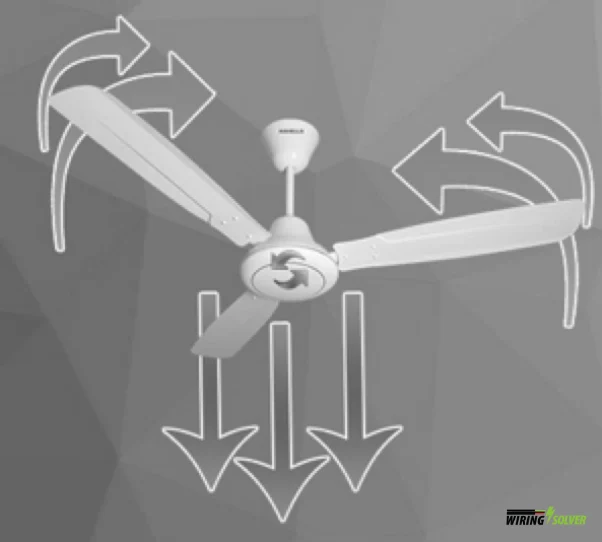
Warm air rises and is drawn up by the ceiling fan because it is lighter than cold air. As seen in the diagram above, after sucking up the warm air, the ceiling fan will push the cooler air downward to the floor (Fig-1).
This cold air will create a perspiration effect, which evaporates the sweat using the body heat, thus taking away heat from your body, making you feel cooler. As a result, in the summer, this is the greatest direction for a ceiling fan to spin. In the winter, though, the situation is reversed.
Ceiling Fan Direction Switch: Left or Right for Summer?
The switch should be flipped to the left on horizontal direction switches for downward airflow, which is the recommended direction for ceiling fans in the summer. However, for vertical switches, it should be flipped down for downward airflow.
How to change ceiling fan direction switch for summer?
- Turn off the ceiling fan.
- Wait for the fan blades to come to a complete halt.
- Use a ladder or step stool to gain elevation.
- Locate the direction switch. It is usually placed around the motor housing.
- The appropriate ceiling fan direction for summer is downward. For that, flip the switch left for horizontal, and down for vertical switches.
- Step down from the ladder, and turn on the fan.
- Verify that the ceiling fan blades are moving in a counterclockwise direction.
Following these steps, you can easily change the direction of your ceiling fan. But, if you’re wondering “how to change ceiling fan direction without switch?”, it’ll require a bit more effort as well as a bit of electrical skill.
Does Ceiling Fan Direction Help Protect Your AC Unit and Save Bills?
Alongside saving money on your monthly power bill by changing the way your fan blades spin, it can also help relieve the strain on your air conditioner.
The longer you use your device, the more probable it is to suffer damage and wear and tear, resulting in pricey repairs down the road.
The direction that your ceiling fan spins in directly affects your air-conditioner. Clockwise vs counterclockwise fan directions have a varying effect. The appropriate ceiling fan direction to cool will entirely depend on the season and your air-conditioning unit.
Thus it Is highly advised to change your ceiling fan direction appropriately based on the season. You might also be wondering, are ceiling fans dangerous? Though accidents do occur, they are reliable and completely safe if maintained properly.
Summary
Now that you know, that counterclockwise is the best ceiling fan direction for summer, I believe, you too will use this knowledge to help cool your household better alongside saving some money on electricity bills.
As discussed in the article, ceiling fan direction definitely has an impact on both the cooling and air-conditioning system of your household. Utilizing it properly will ensure less electricity bills, less maintenance of your air-conditioning unit and more cooling.



